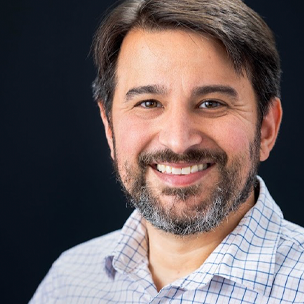One of my favorite quotes comes from the Greek philosopher Heraclitus: “The only constant is change.”
Yet, in America, some things barely change. This is especially true regarding our relationship with wealth and power.
For a country founded on the rejection of monarchy and aristocracy, we have developed an unusual fondness for those in power. We celebrate them as if they are royalty, excuse their excesses, and even defend their right to hoard unimaginable amounts of wealth.
I have no issue with people being rich, but when wealth is amassed in ways that actively harm others, it becomes morally wrong.
But exploitation for wealth isn’t just an ethical issue—it’s a structural problem. The concentration of money and power at the top isn’t happening by chance. It is the result of deliberate government policies that prioritize the wealthiest Americans while leaving everyone else to compete for what’s left.
America’s Unfair Disparity
The idea of America as a land of opportunity where anyone can rise from humble beginnings to immense wealth is deeply ingrained in our national identity. We tell ourselves that hard work and ingenuity alone lead to success, and anyone can become a millionaire if they just try hard enough. While I believe this is true to an extent, reality tells a different story, one where wealth begets more wealth and those at the top use their power to shape the system in their favor.
In my last article, I examined how the expiration of key provisions in the Tax Cuts and Jobs Act (TCJA) and new tariffs on everyday goods will financially strain millions of Americans. This expiration could have been an opportunity to recalibrate tax policy to benefit middle- and lower-income families. Instead, the newly passed budget framework by the Republican-led House Of Representatives and supported by our own representative, Brian Jack, makes it clear: the extension of these tax cuts is primarily designed to benefit the wealthy at the expense of ordinary Americans.
Here’s how the tax benefits are distributed across income levels, highlighting the disparity:
Lower-Income Earners
While Republicans promote the extension of the TCJA as a win for all Americans, the reality is that low-income families will see little to no lasting benefit, and many will end up worse off than they were before.
The Tax Policy Center (TPC) found that taxpayers in the second income quintile—those earning between $25,000 and $48,600 per year—received an average tax cut of just $380 in 2018 under the TCJA. Under the newly passed House budget framework, any small relief that low-income Americans might receive would likely be wiped out entirely due to deep funding cuts in essential programs that millions rely on for survival.
The budget slashes $880 billion from Medicaid, the program that provides healthcare coverage for 72 million Americans, including low-income families, children, seniors, and people with disabilities. According to a 2023 study by the Kaiser Family Foundation, two-thirds of Medicaid recipients come from working families, meaning that these cuts wouldn’t just impact the unemployed.
Without Medicaid, millions of people could lose access to doctor visits, prescription medications, hospital care, and life-saving treatments. A family of four earning $30,000 per year that currently qualifies for Medicaid may lose their coverage entirely, forcing them to either go without care or take on medical debt. Given that medical bills are the leading cause of bankruptcy in the U.S., these cuts would likely push many low-income families into financial ruin.
At the same time, the budget calls for $230 billion in cuts to the Supplemental Nutrition Assistance Program (SNAP), commonly known as food stamps. The average monthly SNAP benefit per household in 2023 was about $212 per person—a modest sum that barely covers groceries for a week, let alone an entire month. The proposed cuts will force more parents to skip meals so their children can eat, more seniors to go hungry, and more low-wage workers to stretch already-thin paychecks even further.
Middle-Income Earners
While middle-class households would see some tax relief, the benefits are modest. The TPC estimated that taxpayers in the middle-income quintile—those earning roughly between $48,600 and $86,100 per year—received an average tax cut of $930 in 2018 under the TCJA. While this tax break may offer short-term relief, it pales in comparison to the massive cuts enjoyed by wealthier households.
Moreover, like lower earners, many middle-class families may find themselves paying more in the long run due to the rising costs of healthcare, the elimination of key tax credits, and additional out-of-pocket expenses that far exceed their modest tax break.
One major specific concern is the rollback of enhanced tax credits under the Affordable Care Act. Under the current budget plan, the improved premium tax credits that help middle-class families afford health insurance would be eliminated, leading to higher premiums for millions. According to the Kaiser Family Foundation, nearly 20 million Americans, including self-employed individuals and small business owners, rely on these tax credits to offset the cost of private health insurance. Without these subsidies, many middle-class families could see their annual healthcare expenses increase by thousands of dollars—far more than the $930 tax break they would receive.
Additionally, the new budget proposal shifts significant financial burdens onto state and local governments. Many states, already operating on tight budgets, would be forced to cut services or raise taxes to compensate for reduced federal funding. This means that even though middle-class families may see a reduction in federal taxes, they could face increased property taxes, sales taxes, and other local levies to make up the difference.
Further compounding these challenges is the impact of rising inflation and increased tariffs on imported goods. The Trump administration’s renewed push for tariffs—particularly on Chinese imports—will likely raise costs on household essentials, including electronics, automobiles, and home goods. As seen during the 2018–2019 trade war, businesses typically pass these costs onto consumers, meaning many middle- and lower-class families will bear the brunt of higher prices at the checkout counter.
Top-Income Earners
The richest households stand to benefit the most from the proposed extension of the TCJA and the broader tax policies outlined in the House’s budget framework. The Center on Budget and Policy Priorities (CBPP) estimates that top earners will enjoy an annual tax cut averaging $62,000 per household, which approaches the $76,052 total annual income of a full-time worker in our House district.
But the benefits for the wealthiest households don’t stop there. The budget also allocates an additional $900 billion in corporate tax breaks, which will disproportionately benefit executives, shareholders, and large business owners, many of whom already enjoy record-high corporate profits. While Republicans have framed these tax cuts as “pro-growth,” historical data suggests that such policies do little to spur job creation or wage increases for ordinary workers. Instead, they primarily fuel stock buybacks, executive bonuses, and shareholder dividends, further enriching the ultra-wealthy while doing little to improve economic conditions for the vast majority of Americans.
If history is any indication, these tax cuts will inevitably lead to renewed calls to slash Social Security, Medicare, and other safety net programs under the guise of “addressing the deficit”—a deficit these very policies helped create. Time and again, tax cuts benefiting the wealthy have been followed by dire warnings about rising national debt, which lawmakers then use to justify cutting essential programs that working- and middle-class Americans rely on. The 2017 TCJA exemplifies this pattern, adding nearly $2 trillion to the national debt over a decade. While its early provisions distributed tax cuts across income groups, by 2027, when key elements are fully phased in, an estimated 83% of the tax breaks will go to the top 1% of earners. Rather than acknowledging how their own policies contributed to ballooning deficits, however, lawmakers have pivoted to austerity measures that shift the burden onto everyday Americans.
This approach ignores a fundamental economic reality: when middle- and lower-income households receive tax relief or direct financial assistance, they put that money back into the economy and drive demand for goods and services. According to the Congressional Budget Office, tax cuts for lower-income households generate significantly greater economic activity compared to tax cuts for the wealthy, who are more likely to save or invest their gains rather than spend them. The Economic Policy Institute also found that public investments in programs like Social Security and food assistance provide a greater return on GDP growth than tax cuts for high earners, whose wealth accumulation does little to spur immediate economic expansion. Yet, rather than strengthening these programs or directing relief where it would do the most good, lawmakers continue to funnel tax benefits to the wealthiest Americans and further exacerbate inequality.
America’s Unfair Disparity: International Edition
As if the budget framework didn’t benefit the rich enough, we’re now talking about selling U.S. citizenship to wealthy foreigners.
Donald Trump, who has spent years railing against immigrants, is now proposing a plan that allows any wealthy foreigner to purchase American citizenship for $5 million. Under this program, foreign billionaires—who don’t need to speak English, contribute to the economy, or even live in the U.S.—would be able to buy their way into citizenship. The contrast is glaring: while working immigrants who have spent years in the U.S., often serving in the military or paying taxes, face roadblocks to citizenship, those with enough money can simply cut a check and fast-track their way in.
This “citizenship-for-cash” scheme builds on the EB-5 visa program, which has been around for decades under both parties and allows wealthy foreigners to invest in American businesses in exchange for green cards. Trump’s businesses have previously used this program extensively, particularly to court Russian investors—a fact his son Eric once openly boasted about back in 2018. But under this new plan, foreign oligarchs wouldn’t even need to create jobs or contribute to the U.S. economy. They’d simply pay up and be welcomed into the country with open arms while everyday Americans are being told there’s no money to extend healthcare coverage, no money to expand child tax credits, and no money to invest in social programs that help working families.
A New Gilded Age?
We’ve unfortunately been in this situation before.
At the turn of the 20th century, the original Gilded Age saw the rise of robber barons—figures like John D. Rockefeller, Andrew Carnegie, J.P. Morgan, and Cornelius Vanderbilt—who monopolized industries, crushed competition, and built vast personal empires on the backs of exploited workers. They dominated essential sectors of the economy like oil, steel, banking, and railroads by using ruthless tactics to eliminate rivals and consolidate their power. Justifying their immense wealth through Social Darwinism, they claimed their success was proof of their superiority while workers labored in dangerous conditions for poverty wages with no legal protections.
These industrial titans held such sway over the economy and government that they effectively dictated national policy. Wall Street bankers funneled millions into William McKinley’s 1896 presidential campaign, ensuring that big business—not workers—would shape economic policy for years to come. Meanwhile, the Supreme Court’s 1905 Lochner v. New York decision reinforced the idea that the government had no right to regulate business contracts, effectively stripping workers of labor protections and allowing corporate abuses to flourish.
Now, we are witnessing a potential second Gilded Age. Only this time, the oligarchs aren’t just controlling industry. They’re controlling the flow of information itself.
Media moguls like William Randolph Hearst and Joseph Pulitzer used their newspapers to manipulate public opinion and push policies that favored corporate and political interests in the late 19th century, and that power has consolidated even further. A 2024 study by the Columbia Journalism Review found that nearly 80% of all digital news and social media platforms are controlled by just five billionaires, meaning a handful of unelected individuals with their own financial and political motives now determine what information is amplified and what is buried.
Mark Zuckerberg’s control of Meta (Facebook, Instagram, and WhatsApp) grants him unprecedented access to the personal data of billions of users. Jeff Bezos’ ownership of The Washington Post ensures that one of the country’s most influential newspapers ultimately aligns with his interests—evident when his February 26th directive to shift the Post’s opinion section toward “Personal Liberties and Free Markets” led to the resignation of opinion editor David Shipley in protest. Meanwhile, Rupert Murdoch’s Fox empire continues to dominate conservative media, and Larry Page and Sergey Brin’s Alphabet (Google’s parent company) dictate what information surfaces in global search results.
Elon Musk’s growing influence is perhaps the most extreme example. His acquisition of Twitter (now X) was not the beginning of his control over public discourse, but an expansion of his already vast influence. Previous to Twitter, Musk controlled Starlink, Tesla, and Neuralink—three companies critical to national security, energy, and artificial intelligence. His Starlink satellite system became indispensable to global military operations, and leaked Department of Defense documents revealed that Musk was granted direct decision-making power over military deployments involving Starlink, marking the first time in modern history that a private citizen wielded such authority over national defense strategy. With his purchase of Twitter, Musk didn’t just acquire a social media platform—he strengthened his ability to shape public narratives, silence critics, and solidify his role as one of the most powerful individuals in the world.
The Path Forward
History repeats itself, and we find ourselves confronting many of the same battles we’ve fought before. The last time wealth and power were this concentrated, it took decades of activism, economic reform, and political upheaval to restore balance. But unlike the first Gilded Age, today’s divisions run deeper. Our society is more fractured, more tribal, and often hostile to those with differing perspectives.
However, progress is happening.
Workers in industries once thought untouchable by organized labor—tech, retail, and logistics—are now unionizing to demand better wages, safer conditions, and protections against corporate exploitation. In 2023, union election petitions surged nearly 60% from just a few years prior, signaling a growing demand for collective bargaining rights.
Meanwhile, independent journalism is trying to push back against the consolidation of media power. Outlets like ProPublica and The Intercept are exposing corruption and corporate influence, even as their reporters face mounting legal threats, financial pressures, and digital censorship.
Grassroots movements are also rising to challenge billionaire dominance in politics, recognizing that both major parties remain deeply tied to wealthy donors and corporate interests. Across the country, some candidates are rejecting corporate PAC money, relying instead on small-dollar contributions to fund their campaigns. In response, billionaires and corporate lobbyists have poured hundreds of millions into super PACs and dark money groups, ensuring their grip on policy remains firm.
While workers, journalists, and activists are fighting back, their efforts alone are not enough.
We need to move beyond Left versus Right. We need to start thinking in terms of Up versus Down.
Which way will we ultimately go?













Leave a Comment
You must be logged in to post a comment.